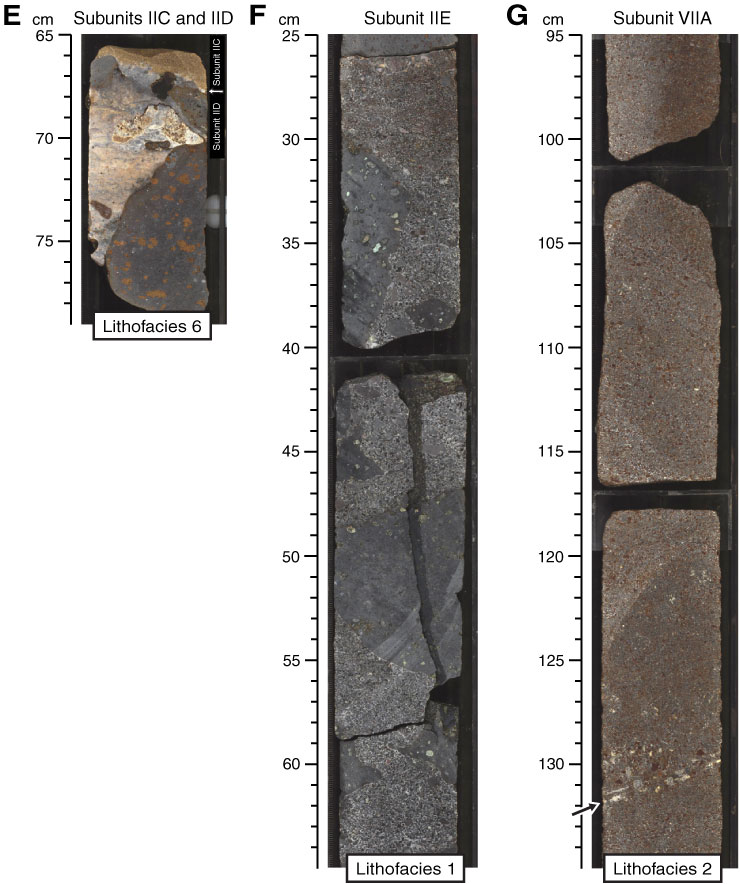
Figure F5 (continued). E. Foraminiferal bioclast limestone in Subunit IID (interval 330-U1374A-3R-1A, 65–79 cm), corresponding to a condensed hemipelagic interval with several hiatuses and hardground surfaces and probably reflecting initial drowning of Rigil Guyot at Site U1374 (see also Fig. F6). Cement textures, erosional contact ages between Subunits IIC and IID (arrow), and paleontological ages also support a late-stage reemergence of the seamount at Site U1374. F. Grayish basalt conglomerate with bioclasts in Subunit IIE (interval 330-U1374A-3R-2A, 25–65 cm), deposited in an intertidal to subtidal environment and believed to represent the first sedimentary record after or during flattening of the top of Rigil Guyot at Site U1374. G. Multicolor basalt sandstone in Subunit VIIA (interval 330-U1374A-7R-3A, 95–135 cm), showing a gastropod and bioclast-rich inclined layer (arrow), interpreted to have emplaced on a shallow-marine slope as a debris flow. (Continued on next page.)

Previous | Close | Next | Top of page